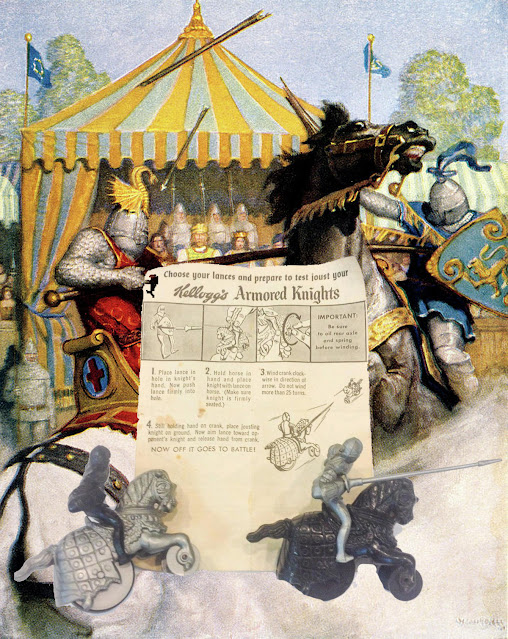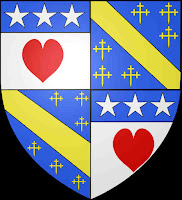A
fellow author wrote a very interesting blog last month:
https://prairierosepublications.blogspot.com/2022/01/blog-post.html
Kaye
Spencer's favorite childhood toy. Check it out. For me, her words brought up distant
memories...and good ones.
When I was a small child I recall people asking me, “Well, little girl, what do you want to be when you grow up?” Most children were quick with an answer. A
nurse. A ballerina. An astronaut. A cowboy or a policeman. Those children seemed so sure of their futures.
Yet, when those queries came to me, I felt nothing but confusion. I would shrug and think myself stupid for not
having an answer. Always a bit of a
rebel, a loner, and most definitely a daydreamer, none of the typical
professions seemed to call to me.
However, there were two points when destiny revealed itself to me—a special shard in time that whispered, “pay attention, lass...this is a turning point in your life.” I was too young to fully understand when they occurred, yet in hindsight, the signposts were so clear.
The first time the Hand of Fate touched my young life was in 1958. It came in the form of a magical toy—at least it was magical to me—one that I could only obtain by collecting box tops from Kellogg’s cereal. That special toy leapt to mind when I read Kaye Spenser’s blog. Obviously, it wasn’t the value, since it was something you earned by eating cereal! Yet, to me it was the most precious treasure.
In the 1950s you often could earn items by collecting box tops, or even found items concealed inside boxes of products. I recall my mum collecting a set of plates, cups and saucers from boxes of soap flakes (NO such thing as liquid soap back then!). Each box had one of the pieces of pottery. Sometimes, it would be tumblers. And you could save the box tops to get bigger pieces like salad bowls, or serving platters, or a cut crystal pitcher. I guess it was an adult’s version of Cracker Jacks with their “surprise” inside. For kids, there were other items you could earn with your box tops. Recall in the movie The Christmas Story when Ralphie sent off for his Ovaltine’s Little Orphan Annie’s decoder ring? Well, now you have how an idea of kids of my era eagerly munched Kellogg’s cereals, trying to save enough box tops before an offer’s time ran out. I never tried before. The gifts of toy cars, dolls and such didn’t interest me enough to keep eating the same cereal for months. One day that changed. My indifference vanished when I picked up a box of Kellogg’s Corn Flakes and happened to glance at the back. I felt as if I couldn’t breathe. For a heartbeat the earth stopped rotating and all around me receded to shadow. All I could see was a very colorful image of ladies and warriors, and two armoured knights jousting. As my surroundings receded about me, I heard the sounds of the huge destriers, their snorting, hooves pounding, the crash of the lances against shields. I’m sure they intended them as a promotion for boys, but I wanted those toys so much. They offered two knights—one in black armour on a black barded horse, and one in silver on a silver charger. The knights were detachable from the horses, as were the knights’ shields and lances. You could wind them up, and set them hurdling toward the other so they actually jousted. A very sophisticated toy for a box top offering. I was determined to earn those toys!
When I told my mother that I wanted them, she arched an
eyebrow and rolled her eyes. I could
clearly read her thought, “That’s your
grandfather’s doing.” Well yes, he
did teach me to love history, especially the Middle Ages. Knights,
Scotland, Robert the Bruce, James “Black” Douglas and Thomas Randolph, earl of
Moray were tales with which he filled my hungry mind. He read me stories about them instead of fairytales. So true, he planted the seeds.
Yet, it was something more. A feeling as if the Hand of Destiny was touching my young life. I had no idea what it truly meant, or how it
would shape my future, but I knew it was important that I earn those toys. One stumbling block—such a sophisticated item
required a higher number of box tops. My
heart feared I would never be able to consume enough corn flakes in the time
allotted. When I emptied my first box, I
cut out the painting of the ladies and knights at the tournament on the back
and kept it close. I slipped it under my
pillow at night and dream beautiful stories of ancient times. At Christmastime when I went to my
grandfather’s there were toys—expensive toys.
Oddly, I don’t recall what presents I received that year. I do
clearly recall the knights that I wanted so badly and sadly knew they wouldn’t
be under the tree.
Late one night, I was sitting up in the dark, cuddled in the window seat with a tartan blanket, and watching the night sky. I hoped to spot a shooting star so I could make a wish—one that I would somehow get those knights. I often talked to myself, or sometimes imaginary friends—signs of an intelligent child, I have since learned. So when I did see the star streaking across the night sky, I made my wish. “Star light, Star bright, wish I may, wish I might...” My grandfather came in minutes later and said if I got in bed, he would tell me a tale of the valiant James Douglas. I didn’t know then that he had overheard my wish.
My hands were shaking as I wound them up, and sent them to jousting. Merely cheap plastic toys gained by eating corn flakes. Yet, they were so much more. As I played with them, I didn’t see toys designed for little boys to enjoy. Instead, I saw handsome James Douglas and Thomas Randolph jousting before King Robert Bruce. In my mind’s eye, I envisioned Bruce’s wife, Elizabeth de Burgh, or another countess at court, tying their ribbons of favor to Douglas’ or Randolph’s sleeves. Those toys were touchstones that carried me into a magic realm of adventures, of handsome knights and lords, beautiful ladies, and love.
My treasured toys were carefully protected through the decades. But Fate isn’t often kind. They were lost in a house fire ten years ago. I lost many precious items in that fire. They were just little plastic toys. Yet, I mourned their forfeiture. They were and had been so much more to me. One day, after I moved into my new home in another town, I was prowling a secondhand shop with Candy Thompson, looking for unusual finds. Imagine my shock when sitting there in the middle of a big bowl were the two knights! While not the original ones, it felt like a piece of the past had come back to me.
The second time, I felt Fate touch me was when I was almost thirteen. It was summer and I was in place in the middle of nowhere Kentucky, standing before a turn-rack of paperback books, browsing novels by Victoria Holt, Barbara Michaels and Phyllis Whitney. Faintly, in the background, I heard a tune playing on a radio—The Beatles’ Paperback Writer. Once more, for that long heartbeat the world held its breath, and all I could see was the Gothic romance in the rack before me.
As I listened to the lyrics, I knew...I wanted to be a paperback writer. Not a bestselling author, not Jane Austin, simply a paperback writer, with a means to allowing others to follow me on my distant adventures. Suddenly, that little six-year-old shrugging when someone asked her what she wanted to be when she grew up was vanquished. I understood I wanted to be a writer, and I wanted to pen tales of handsome warriors and beautiful ladies in a time gone by.
























































